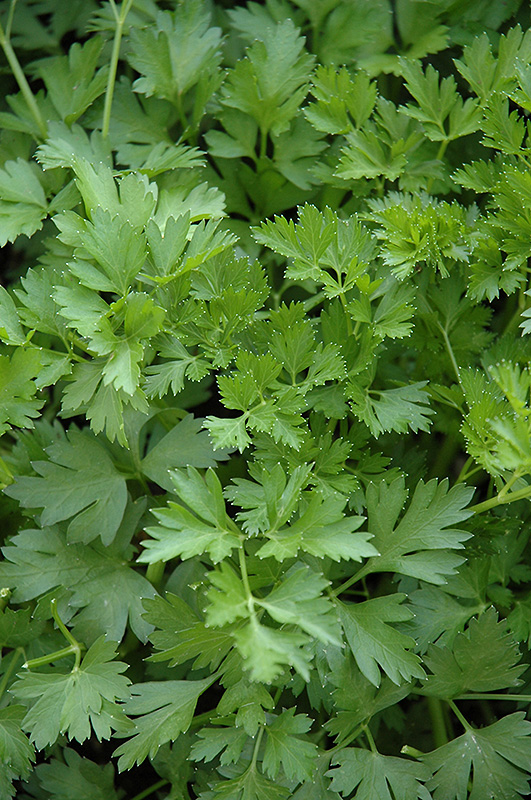Italian Parsley
Petroselinum crispum 'var. neapolitanum'
Height: 24 inches
Spacing: 18 inches
Sunlight:
![]()
Hardiness Zone: (annual)
Other Names: Flat-leaf Parsley
Description:
An upright parsley producing large, flat, open medium green leaves; requires a well prepared fertilized soil and even moisture; if it flowers, the leaves are inedible; pinch blooms to promote foliage
Edible Qualities
Italian Parsley is an annual herb that is commonly grown for its edible qualities. The fragrant ferny compound green leaves are usually harvested from late spring to mid summer. The leaves have a bitter taste and a light fragrance.
The leaves are most often used in the following ways:
- Cooking
- Drying
- Seasoning
Planting & Growing
Italian Parsley will grow to be about 24 inches tall at maturity, with a spread of 24 inches. When grown in masses or used as a bedding plant, individual plants should be spaced approximately 18 inches apart. Although it's not a true annual, this fast-growing plant can be expected to behave as an annual in our climate if left outdoors over the winter, usually needing replacement the following year. As such, gardeners should take into consideration that it will perform differently than it would in its native habitat.
This plant is typically grown in a designated herb garden. It should only be grown in full sunlight. It prefers to grow in average to moist conditions, and shouldn't be allowed to dry out. It is not particular as to soil pH, but grows best in rich soils. It is highly tolerant of urban pollution and will even thrive in inner city environments. This is a selected variety of a species not originally from North America.
Italian Parsley is a good choice for the edible garden, but it is also well-suited for use in outdoor pots and containers. It can be used either as 'filler' or as a 'thriller' in the 'spiller-thriller-filler' container combination, depending on the height and form of the other plants used in the container planting. It is even sizeable enough that it can be grown alone in a suitable container. Note that when growing plants in outdoor containers and baskets, they may require more frequent waterings than they would in the yard or garden.
